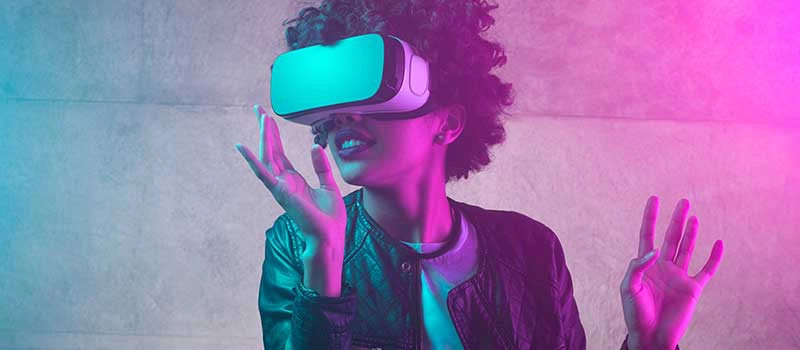The term brand activation has been growing in popularity in recent years, but what is it and how can you apply it?
Well, as people, our lives are made up of a series of experiences.
Some experiences are forgettable while others are memorable.
Memorable experiences form long-lasting memories which are usually linked to strong emotions such as joy, happiness, surprise and excitement.
Brand activation aims to bring a brand to life by engaging through memorable experiences, imprinting long-lasting and emotional memories with the audience.
What Is Brand Activation?

Brand activation is a modern marketing discipline which, in the greater scheme of things is a relatively new promotional strategy.
More than ever, with the increased marketing noise, brands need to think outside the box and go beyond the traditional marketing channels.
A brand activation campaign aims to drive consumer action, which aims to bring brands to life through interactive brand experiences like a pop-up store or giveaways that often create long-lasting emotional connections for your target audience.
What’s The Goal Of Brand Activation?

The goal of brand activation is four-fold:
Drive consumer engagement
Drive consumer response / action
Increase brand awareness
Increase brand recall and brand salience
Brand activations are usually one-off marketing campaigns that typically last from a few hours to a few days. And an effective campaign usually generates earned media coverage enhancing overall reach. For this reason, they’re often used as part of the overall marketing strategy when launching a new product or even a new brand.
Earned media coverage is (often supported by public relations) happens when a brand’s marketing activity becomes newsworthy in its own right.
Often, with the help of PR, the news media picks up a story on a brand’s activity and reports on this activity amplifying the reach and effectiveness of the campaign.
Why Is Brand Activation Important?

Any strategy that involves your brand is important.
The reason brand activation is so important is that in this increasingly automated digital world we find ourselves in, the lack of interactive, engaging and tangible events has left a gaping hole.
The relationships we have with most brands have almost moved into a virtual world and brand activation brings an element of tangibility that reminds the audience this brand and their relationship with it is real.
PRO Brand Strategy BluePrint
Build Brands Like A Pro Brand Strategist

What Are The Types Of Brand Activation?

Brand activation is not a two-dimensional strategy with set tools and tactics. Instead, a brand activation event can be implemented across any number of channels or any touchpoint your potential customers are in.
Let’s take a look at some of the most popular brand activation strategies and techniques.
Explore Brand Strategy
Programs & Tools
Experiential Marketing

Experiential marketing is exactly how it sounds.
It goes beyond digital marketing. Instead, it’s a campaign that centres on marketing through unique experiences that is typically very creative, highly unusual and often thought-provoking or emotional.
Lean Cuisine is a compelling case study. They launched a heartwarming campaign in New York’s Grand Central Station that shifted the perspective on how people could weigh themselves:
Instead of measuring themselves by physical weight.
Lean Cuisine encouraged the audience to choose another way to weigh themselves, with one woman making the choice to weigh herself on the love she gave to her children.
That feel-good campaign left lasting memories not just with those in Grand Central Station, but with many of the 204 million impressions through the campaign going viral.
Sampling Campaigns

Though experiential marketing is often highly creative with a budget to match, sampling campaigns can also leave the audience with a positive memory simply by handing out free samples.
Everyone loves getting free stuff. And companies can benefit from the uptick in brand awareness with these simple campaigns.
For years, Red Bull consistently ran sampling campaigns hiring students to drive Red Bull Minis and VW Beetles around university cities and campuses while handing out free samples.
The exposure of and constant brand presence of this campaign played a major role in embedding Red Bull into the youth culture.
In-Store Brand Activation

The in-store brand activation strategy is useful for leveraging a physical shopfront brand.
Initiatives such as in-store demonstrations and hands-on experience allow customers to interact firsthand with products, which is an especially effective brand activation strategy for product launches.
This strategy is executed when attendance levels are high. For example, during the sale season and the weekends.
Customers test a product
How To Create A Brand Activation Strategy

So, now that you can see the value of disrupting the status quo and giving your audience a tangible and activating experience, it’s time to look at exactly how you can go about doing just that.
In order to create a successful brand activation strategy, you need to remember that your audience is the most important part of any campaign.
You should be thinking about what will engage them and how they’ll react in advance so there’s no misstep when it comes time for execution.
You also want your brand activation strategy to align with your brand’s values and overall brand strategy.
From visuals to context, everything must remain on brand.
Step 1: Set Your Goals And Metrics

Decide exactly what you want to achieve with your activation campaign.
Do you want to generate an extra 20,000 visits to your website?
Do you want to get 5,000 more people on your email list?
Do you want to increase sales by 10%?
You can’t measure the success of a campaign if you don’t have specific goals.
Get crystal clear on what you want to achieve and how you’ll measure success.
Step 2: Create Your Campaign Budget

You don’t necessarily need a massive budget for an activation campaign. However, if you want to make a solid impression, you need to make sure you don’t do it half-baked.
The costs can vary a lot depending on the type of brand. But as an example, for a small business, you might spend anywhere from $1,000 to $25,000. Consider costs like influencer marketing budgets, digital campaigns, and the physical requirements for your event.
Below are some of the most common costs associated with this type of project:
Activation Space Costs (i.e. location rental, equipment and staffing)
Marketing Materials & Creative Services (i.e. design, graphics, photography or videography)
Event Management Services (eg. catering, entertainment, performances)
Event Production Services (eg. production, promotion)
Social Media Planning & Management Fees
Custom Branding Elements and Apparel
You’ll need a detailed plan for your campaign budget in order to ensure you can adequately cover the costs of an activation project.
Step 3: Develop Your Audience-Centred Experience

Let’s be crystal clear on why you’re doing this and who you’re doing it for.
Brand activation is all about your audience and creating an experience that they’ll remember.
With some perspective on your industry and what you do for them, what are they passionate about, and what gets them excited?
Answering this question is one of the most important factors for a successful activation campaign.
Step 4: Create A Compelling Call To Action

Remember, brand activation is not just about creating a memorable experience.
If your audience walks away with an experience they’ll remember, that’s an important box ticked, but it’s still only half the battle.
Your call to action needs to be directly related to the goal you want them to achieve.
If you want to increase website traffic, your call to action should drive that traffic.
If you want to increase your subscriber list, your call to action should drive that download or opt-in.
The key is that whatever call to action you’re offering needs to have the potential for conversion and should be compelling enough so they’ll take that step when prompted.
Step 5: Amplify Your Activation

The activation itself generates buzz, but that buzz needs amplification and the best way to amplify it is by using your marketing channels to promote it.
Most brand activations are successful not because of the few hundred or few thousand people that experience them in person but because of the amplification, it receives directly from the brand or third-party media sources such as news outlets.
This is especially essential for startups looking to establish themselves in a niche.
So give the community a heads up and let your buzz soar.
Over To You
Time to define the attributes that will become what your brand is known for.
But remember, these traits and characteristics you define only become useful when you methodically and consistently use them time and again through your brand communication.
The more you do, the more neural connections you make in the mind of your audience and the more you will own the meaning you’ve defined for your brand.
Comment below to share your thoughts on defining your attributes and the role of personality in branding.
On-Demand Digital Program
Brand Master Secrets
Make the transition from hired-gun to highly valued brand strategist in less than 30 days. The systems, frameworks and tools inside this comprehensive program are all you need to level up.








